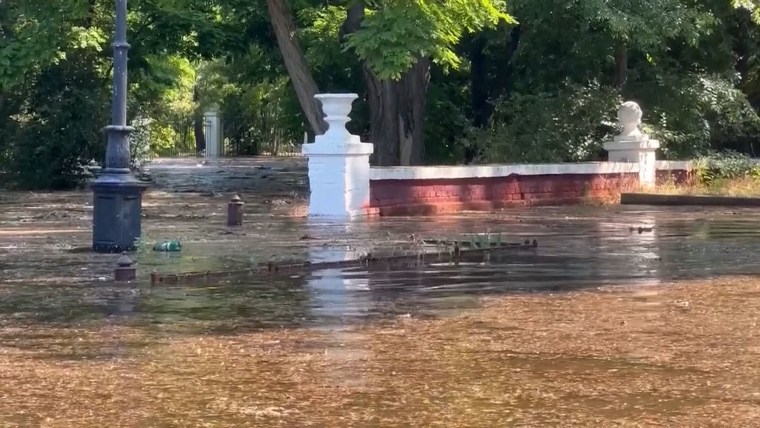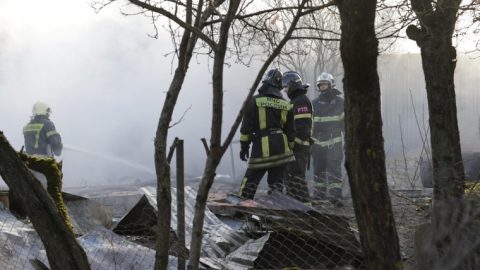An immense wall of water engulfing southern Ukraine looks set to have profound consequences for the war and the region itself.
But the Kakhovka dam was so crucial — providing power and drinking water for entire cities and coolant for a nearby nuclear plant — that it may take some time for the scale of the damage wrought by the vast structure’s collapse to become clear.
“It’s a massive disaster,” said Henrik Ölander-Hjalmarsson, CEO and founding partner of the Swedish hydrological modeling company Dämningsverket AB. Last fall he made a model of what would happen if this dam burst — a wave upward of 12 feet rushing down the river — but this damage “looks much worse” than that, he said, because water levels in the reservoir were already high before Tuesday’s destruction.
The dam has for decades held back the Dnieper River, a major waterway that bisects the front lines in the southern Kherson region between Russian and Ukrainian forces.
It was unclear exactly what caused the breach, with both sides trading accusations of blame. But the people living around the dam and its reservoir look certain to bear the most suffering.
NBC News looks at how bad the damage could be.
Nuclear plant fears
Early concerns turned to the Zaporizhzhia nuclear plant, Europe’s largest, which uses water from the dam’s reservoir to cool its six Soviet-era reactors.
Ukrainian and global officials have voiced fears about the Russian-controlled plant’s safety for months, though those have largely focused on direct sabotage or damage to the plant itself.
A lack of water in the plant’s cooling pond could cause the reactors to overheat and melt down If turned on — potentially spreading radiation over swaths of Ukraine and even the entire continent.
The reactors have been shut down since last year, meaning they need relatively little cooling — the equivalent of one running garden hose each — explained Mark Nelson, managing director at Radiant Energy Group, a San Francisco-based consultancy.
The International Atomic Energy Agency agreed there was no immediate risk, although that may only remain true while the reactors are shut down. A drained reservoir would mean that it will be more difficult for the plant to fire back up to full capacity when the conflict ends.
If plant staff were prevented from topping up the cooling pool, “eventually heat could build up in the reactors that would damage them,” Nelson said. “This could possibly prevent them from ever being used again, a major blow to Ukraine’s economic recovery plans.”
Deluge and drinking water
That danger is likely weeks or even months away. The immediate concern is for the people living near the dam now facing the 4.8 billion gallons of water officials previously warned would be unleashed if the structure failed.
More than half a million people “will lose their houses, a lot of them will have no access to fresh water, some of them will lose power connections,” said Oleksandr Kharchenko, head of the Energy Industry Research Center consultancy. Several “large cities” rely on the reservoir for drinking water, he said. The Russian-annexed Crimean Peninsula notably does, too.
Almost 100 towns and villages would be flooded, according to the World Data Center for Geoinformatics and Sustainable Development, a Ukrainian nongovernmental organization, and the water would only start to recede after five days to a week.
Crucially, for a crop-rich region known as Europe’s breadbasket, the deluge could also cut off irrigation to more than 600,000 acres of agricultural land and spread possibly toxic sediment downstream. That’s according to Eugene Simonov, coordinator of the Ukraine War Environmental Consequences Work Group, who was speaking in an interview in September posted on the independent organization’s website.
“In the event that the dam is blown up, there will be a huge artificial wave of floodwater, dumping some portion of Kakhovka reservoir water downstream,” he said.










Recent Comments